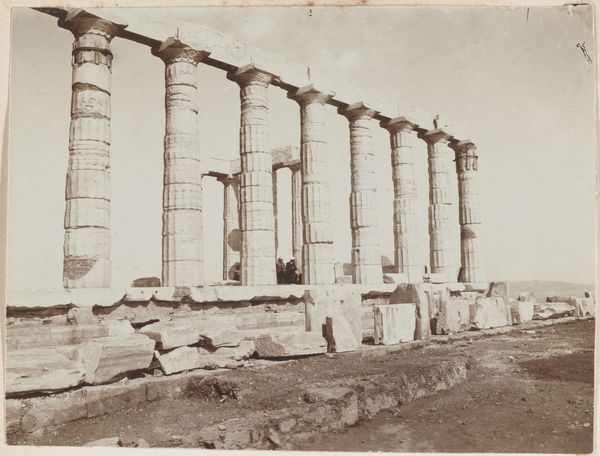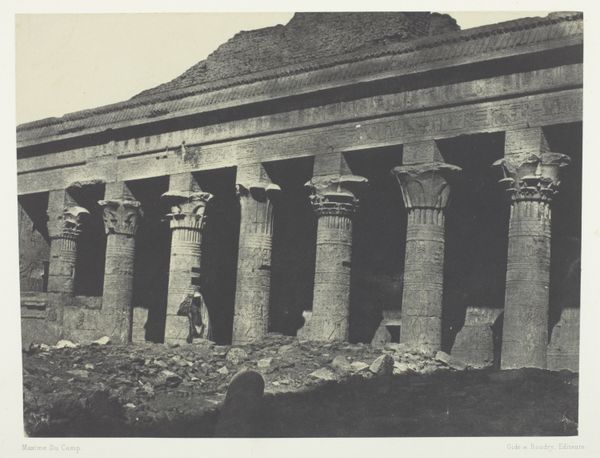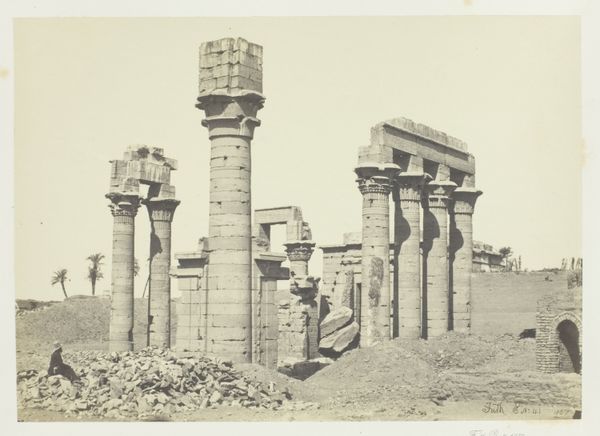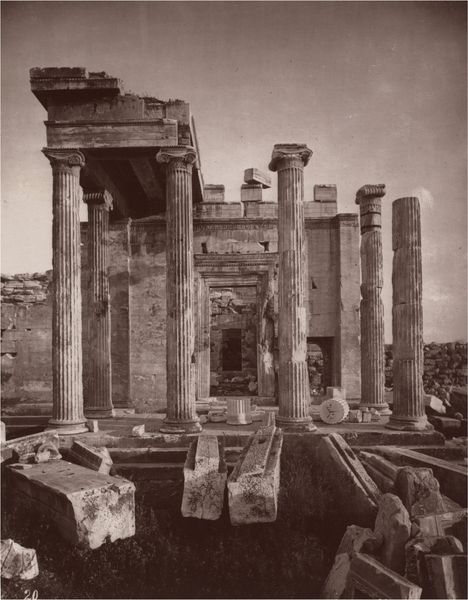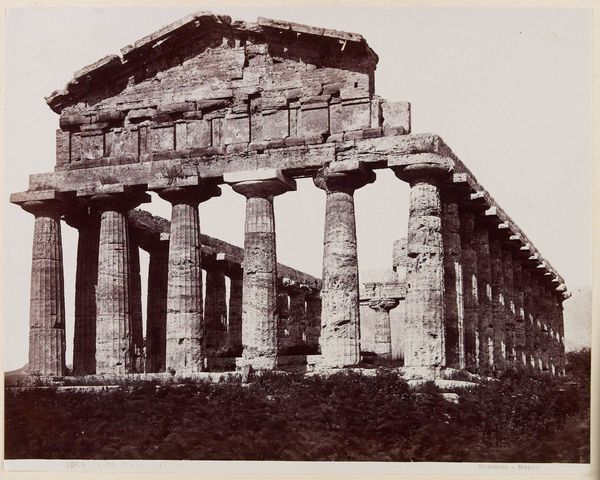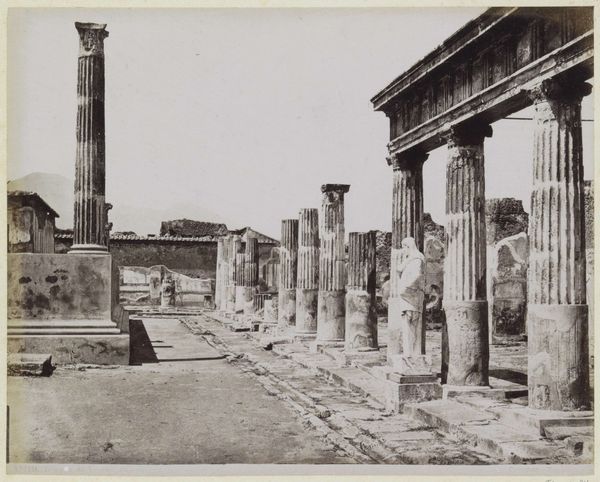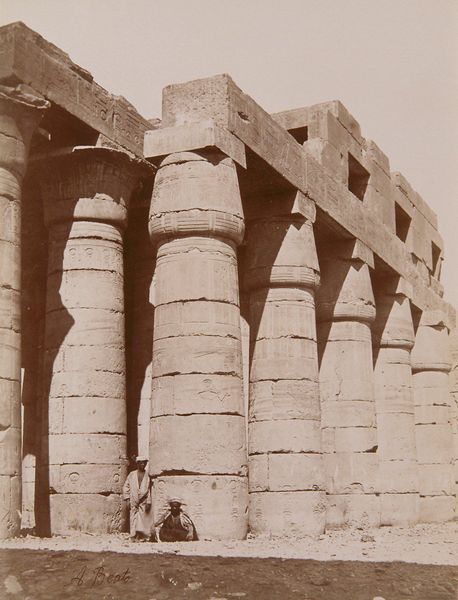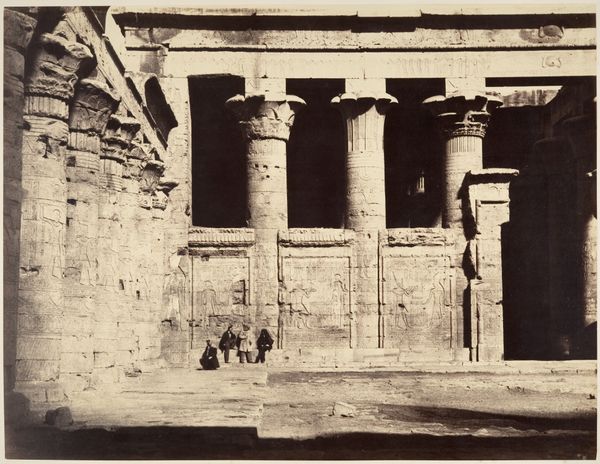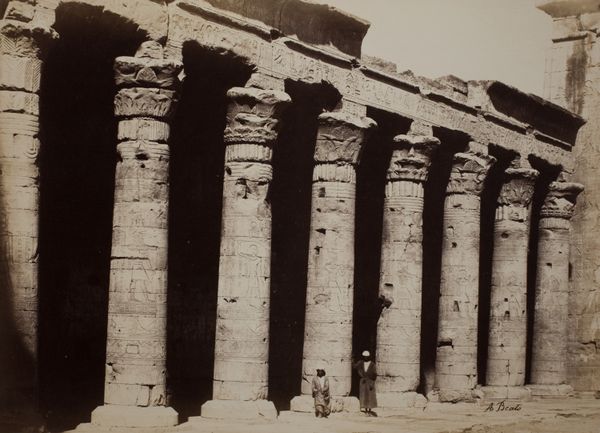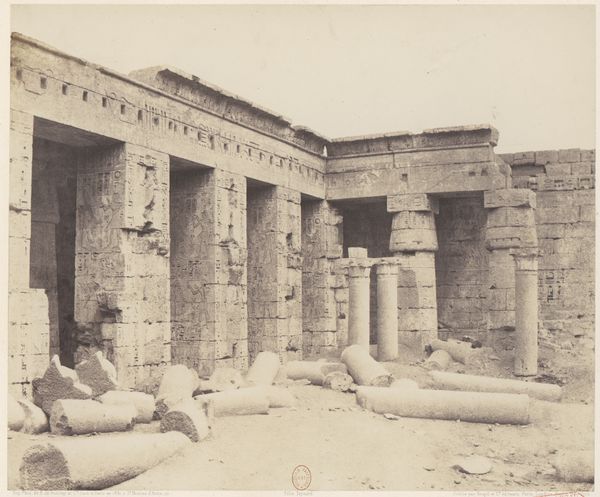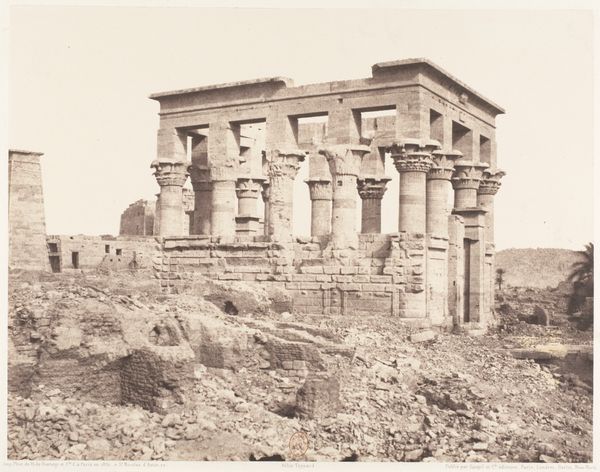
photography, collotype, architecture
#
landscape
#
ancient-egyptian-art
#
outdoor photograph
#
photography
#
collotype
#
ancient-mediterranean
#
column
#
monochrome photography
#
architecture
#
monochrome
Copyright: Public Domain
Editor: So, here we have an old photograph, "Luxor, vue du temple cote ouest," taken by Antonio Beato in the 1870s. It’s a collotype print of the temple ruins. It feels very…stark, almost ghostly. I’m curious about what stands out to you? Curator: Immediately, I'm drawn to the physical realities embedded in this image. Look at the individual blocks comprising these massive columns. Each one quarried, transported, and painstakingly placed. Think of the labor involved, the societal structure that allowed for such an immense undertaking. It’s not just about aesthetic appreciation, but understanding the economic and social mechanics at play in the construction of Luxor. What does the method, collotype, contribute to understanding the artist's viewpoint, compared to seeing this printed differently? Editor: That’s fascinating! The collotype does give it a textured, almost tactile quality that I hadn't considered. It's less about a perfect representation and more about the material presence. Curator: Exactly! This particular printing process, used to capture the monument, connects us directly to the photographic act. Beato, a westerner capturing Egyptian antiquity, created an object that could be consumed. His process highlights that act of photographing as an imposition, extracting, transforming, and finally commodifying Luxor’s cultural legacy. Editor: So the choice of material directly affects how we perceive the social implications, how it came into existence, and the intention behind it. It seems like understanding the "how" can really change the whole experience! Curator: Precisely. The materiality offers us a critical lens for deciphering not only ancient Egyptian civilization, but also the modern systems of power at work during the artwork’s production. What’s changed for you after this discussion? Editor: Now I want to learn more about the different printing processes! It never occurred to me how much the artist’s material choices can reveal about broader social contexts. Thanks for pointing that out.
Comments
No comments
Be the first to comment and join the conversation on the ultimate creative platform.
